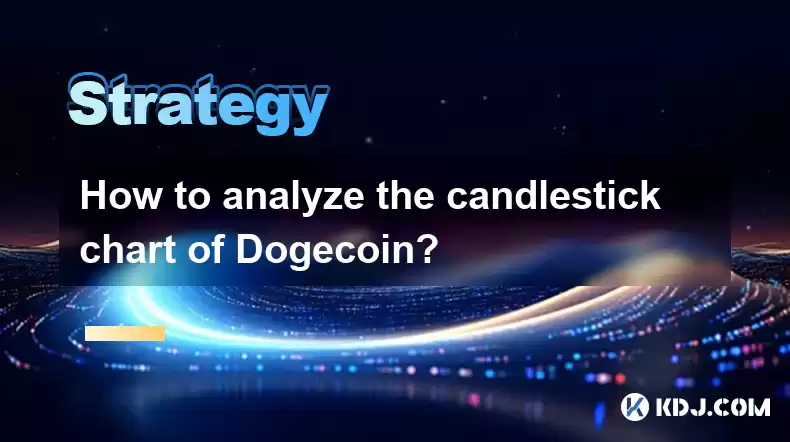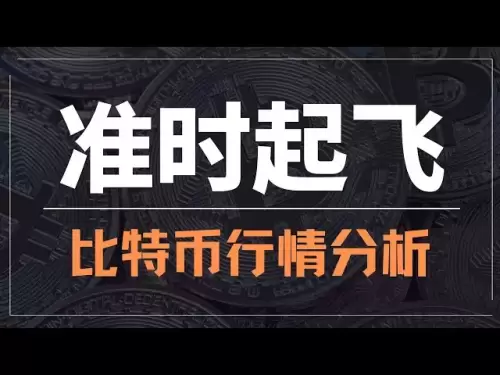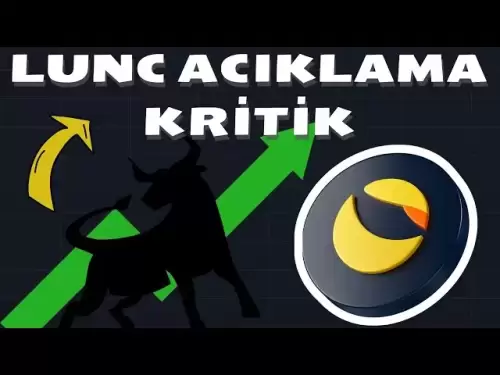-
 Bitcoin
Bitcoin $117300
1.93% -
 Ethereum
Ethereum $3866
5.21% -
 XRP
XRP $3.109
3.81% -
 Tether USDt
Tether USDt $1.000
0.01% -
 BNB
BNB $781.5
1.52% -
 Solana
Solana $173.0
2.95% -
 USDC
USDC $0.9998
0.00% -
 Dogecoin
Dogecoin $0.2181
6.31% -
 TRON
TRON $0.3403
0.93% -
 Cardano
Cardano $0.7683
3.91% -
 Hyperliquid
Hyperliquid $40.08
5.09% -
 Sui
Sui $3.742
7.38% -
 Stellar
Stellar $0.4152
4.69% -
 Chainlink
Chainlink $18.40
10.03% -
 Bitcoin Cash
Bitcoin Cash $580.6
2.21% -
 Hedera
Hedera $0.2543
4.25% -
 Ethena USDe
Ethena USDe $1.001
-0.01% -
 Avalanche
Avalanche $22.94
3.52% -
 Litecoin
Litecoin $121.8
2.24% -
 UNUS SED LEO
UNUS SED LEO $8.955
-0.41% -
 Toncoin
Toncoin $3.330
3.03% -
 Shiba Inu
Shiba Inu $0.00001270
2.97% -
 Uniswap
Uniswap $10.34
6.42% -
 Polkadot
Polkadot $3.805
3.86% -
 Dai
Dai $1.000
0.01% -
 Bitget Token
Bitget Token $4.429
1.80% -
 Cronos
Cronos $0.1495
4.65% -
 Monero
Monero $255.6
-9.08% -
 Pepe
Pepe $0.00001096
4.40% -
 Aave
Aave $282.9
7.85%
How to analyze the candlestick chart of Dogecoin?
Analyzing Dogecoin's candlestick chart is key for traders to spot trends and make informed decisions using patterns like Doji, Hammer, and engulfing formations.
Apr 18, 2025 at 11:28 am

Analyzing the candlestick chart of Dogecoin is an essential skill for any cryptocurrency trader or investor looking to make informed decisions based on market trends and price movements. Candlestick charts provide a visual representation of price action over a specific time period, offering insights into the market sentiment and potential future price movements. In this article, we will delve into the specifics of how to effectively analyze the candlestick chart of Dogecoin, covering the basics of candlestick charts, key patterns to look out for, and practical tips for applying this knowledge in real-time trading scenarios.
Understanding Candlestick Charts
Candlestick charts are a popular tool among traders because they provide a detailed view of price movements within a given timeframe. Each candlestick represents the trading activity for a specific period, which could be a minute, an hour, a day, or even longer, depending on the chart's settings. A candlestick consists of a body and wicks (or shadows) at both ends. The body of the candlestick shows the opening and closing prices, while the wicks indicate the highest and lowest prices during that period.
- Bullish Candlestick: If the closing price is higher than the opening price, the body of the candlestick is typically colored green or white, indicating a bullish trend.
- Bearish Candlestick: Conversely, if the closing price is lower than the opening price, the body is usually colored red or black, signaling a bearish trend.
Understanding these basic elements is crucial for interpreting the overall market sentiment and making predictions about future price movements.
Key Candlestick Patterns for Dogecoin
When analyzing the candlestick chart of Dogecoin, it's important to recognize certain patterns that can signal potential trend reversals or continuations. Here are some key patterns to look out for:
Doji
A Doji candlestick occurs when the opening and closing prices are virtually the same, resulting in a very small or non-existent body. This pattern suggests indecision in the market and can signal a potential reversal if it appears after a sustained uptrend or downtrend.
Hammer and Hanging Man
The Hammer and Hanging Man patterns are characterized by a small body and a long lower wick. The Hammer appears during a downtrend and can signal a bullish reversal, while the Hanging Man appears during an uptrend and can indicate a bearish reversal.
Engulfing Patterns
Engulfing patterns occur when a candlestick completely engulfs the body of the previous candlestick. A bullish engulfing pattern, where a larger green candlestick follows a smaller red one, suggests a potential upward reversal. Conversely, a bearish engulfing pattern, where a larger red candlestick follows a smaller green one, indicates a potential downward reversal.
Morning Star and Evening Star
The Morning Star and Evening Star patterns are three-candlestick formations that signal potential reversals. The Morning Star, which appears at the end of a downtrend, consists of a long bearish candlestick, followed by a small-bodied candlestick (which can be bullish or bearish), and then a long bullish candlestick. The Evening Star, appearing at the end of an uptrend, follows the opposite pattern.
Applying Candlestick Analysis to Dogecoin Trading
To effectively apply candlestick analysis to Dogecoin trading, it's important to combine pattern recognition with other technical indicators and market analysis tools. Here are some practical steps to follow:
- Identify the Trend: Before looking for specific candlestick patterns, determine the current trend of Dogecoin. Is it in an uptrend, downtrend, or trading sideways? This context is crucial for interpreting candlestick patterns accurately.
- Look for Key Patterns: Once you have identified the trend, scan the chart for the key candlestick patterns mentioned earlier. Pay attention to the location of these patterns within the trend, as their significance can vary.
- Confirm with Other Indicators: Candlestick patterns should not be used in isolation. Confirm your findings with other technical indicators such as moving averages, RSI (Relative Strength Index), and volume. For example, a bullish engulfing pattern accompanied by high trading volume and a rising RSI can provide stronger evidence of a potential upward reversal.
- Set Entry and Exit Points: Based on your analysis, set clear entry and exit points for your trades. For instance, if you spot a bullish reversal pattern, you might enter a long position at the close of the confirming candlestick and set a stop-loss just below the low of the pattern.
- Monitor and Adjust: The cryptocurrency market is highly volatile, and Dogecoin is no exception. Continuously monitor your trades and be prepared to adjust your strategy based on new candlestick formations and other market developments.
Practical Example of Candlestick Analysis on Dogecoin
Let's walk through a practical example of how to analyze a Dogecoin candlestick chart. Suppose you are looking at a daily chart of Dogecoin and notice the following sequence of candlesticks:
- Day 1: A long bearish candlestick, indicating a strong downward move.
- Day 2: A small-bodied candlestick with a long lower wick, resembling a Hammer pattern.
- Day 3: A long bullish candlestick that engulfs the body of the Hammer.
In this scenario, you might interpret the sequence as follows:
- The long bearish candlestick on Day 1 suggests that Dogecoin is in a downtrend.
- The Hammer pattern on Day 2 indicates potential exhaustion of the downtrend and a possible bullish reversal.
- The bullish engulfing pattern on Day 3 confirms the reversal signal, suggesting that Dogecoin may be poised for an upward move.
To act on this analysis, you could enter a long position at the close of the bullish candlestick on Day 3, with a stop-loss set just below the low of the Hammer pattern on Day 2. You would then monitor the price action and other technical indicators to manage your trade effectively.
Common Mistakes to Avoid
When analyzing the candlestick chart of Dogecoin, it's important to be aware of common pitfalls that can lead to misinterpretation and poor trading decisions. Here are some mistakes to avoid:
- Over-reliance on Patterns: While candlestick patterns can be powerful tools, relying solely on them without considering other market factors can lead to false signals. Always use candlestick analysis in conjunction with other technical and fundamental analysis tools.
- Ignoring the Context: The significance of a candlestick pattern can vary depending on its location within the broader market trend. Always consider the context before making trading decisions based on candlestick patterns.
- Chasing Every Signal: The cryptocurrency market can generate numerous candlestick patterns, but not all of them will lead to profitable trades. Be selective and focus on high-probability setups that align with your overall trading strategy.
- Neglecting Risk Management: Even the most accurate candlestick analysis cannot guarantee success. Always implement proper risk management techniques, such as setting stop-losses and position sizing, to protect your capital.
Frequently Asked Questions
Q: Can candlestick analysis be used for short-term trading of Dogecoin?
A: Yes, candlestick analysis can be effectively used for short-term trading of Dogecoin. By focusing on shorter timeframes, such as hourly or 15-minute charts, traders can identify quick price movements and capitalize on intraday trends. However, short-term trading requires a higher level of attention and discipline, as the market can be more volatile and unpredictable.
Q: How important is volume when analyzing Dogecoin candlestick charts?
A: Volume is a critical factor when analyzing Dogecoin candlestick charts. High volume can confirm the strength of a candlestick pattern, indicating that a significant number of traders are participating in the price movement. For example, a bullish engulfing pattern accompanied by high volume is more likely to signal a strong upward reversal than the same pattern with low volume.
Q: Are there any specific candlestick patterns that are more reliable for Dogecoin?
A: While no single candlestick pattern is universally more reliable for Dogecoin, some patterns tend to be more significant due to the cryptocurrency's high volatility. Patterns such as the bullish and bearish engulfing, Doji, and Hammer/Hanging Man are commonly observed and can provide valuable insights into potential trend reversals. However, the reliability of these patterns can vary depending on the market context and should always be confirmed with other technical indicators.
Q: How can I practice candlestick analysis for Dogecoin without risking real money?
A: One effective way to practice candlestick analysis for Dogecoin without risking real money is to use a demo trading account offered by many cryptocurrency exchanges and trading platforms. These accounts allow you to trade with virtual funds, enabling you to test your candlestick analysis skills in a risk-free environment. Additionally, you can use historical data to backtest your strategies and gain confidence in your ability to interpret candlestick patterns accurately.
Disclaimer:info@kdj.com
The information provided is not trading advice. kdj.com does not assume any responsibility for any investments made based on the information provided in this article. Cryptocurrencies are highly volatile and it is highly recommended that you invest with caution after thorough research!
If you believe that the content used on this website infringes your copyright, please contact us immediately (info@kdj.com) and we will delete it promptly.
- Bitcoin Reserve, Gold Revaluation, Congress Considers: A New Era for US Financial Strategy?
- 2025-08-08 04:30:12
- KAITO's Momentum: Can It Reclaim Support Amidst Social Media Scrutiny?
- 2025-08-08 04:30:12
- Pi Coin's dApp and AI Potential: Building a Decentralized Future
- 2025-08-08 02:30:12
- Ruvi AI Takes the Lead: Outshining Dogecoin on CoinMarketCap
- 2025-08-08 02:50:12
- Cryptos Under $1: Is Ripple Still the King?
- 2025-08-08 03:50:12
- Cold Wallet, Bonk Price, ICP Price: Navigating the Crypto Landscape in 2025
- 2025-08-08 03:56:12
Related knowledge

How to avoid common crypto investment mistakes?
Jul 13,2025 at 01:35am
Understanding the Risks of Crypto InvestmentInvesting in cryptocurrency can be highly rewarding, but it also comes with significant risks. One of the ...

What is a long-short crypto strategy?
Jul 15,2025 at 10:56am
Understanding the Basics of a Long-Short Crypto StrategyA long-short crypto strategy is an investment approach where traders simultaneously take long ...

What is a long-short crypto strategy?
Jul 11,2025 at 01:28pm
Understanding the Basics of Long-Short Crypto StrategyA long-short crypto strategy is an investment approach where traders take both long and short po...

How to use the RSI indicator for crypto?
Jul 12,2025 at 03:56pm
Understanding the RSI Indicator in Cryptocurrency TradingThe Relative Strength Index (RSI) is a momentum oscillator used to measure the speed and chan...

Is copy trading a good strategy for crypto beginners?
Jul 12,2025 at 08:28am
Understanding Copy Trading in the Cryptocurrency MarketCopy trading is a strategy where novice traders replicate the trades of experienced investors a...

How to build a crypto portfolio with $1000?
Jul 13,2025 at 08:14pm
Understanding the Basics of Cryptocurrency InvestmentBuilding a crypto portfolio with $1000 starts with understanding the fundamentals of cryptocurren...

How to avoid common crypto investment mistakes?
Jul 13,2025 at 01:35am
Understanding the Risks of Crypto InvestmentInvesting in cryptocurrency can be highly rewarding, but it also comes with significant risks. One of the ...

What is a long-short crypto strategy?
Jul 15,2025 at 10:56am
Understanding the Basics of a Long-Short Crypto StrategyA long-short crypto strategy is an investment approach where traders simultaneously take long ...

What is a long-short crypto strategy?
Jul 11,2025 at 01:28pm
Understanding the Basics of Long-Short Crypto StrategyA long-short crypto strategy is an investment approach where traders take both long and short po...

How to use the RSI indicator for crypto?
Jul 12,2025 at 03:56pm
Understanding the RSI Indicator in Cryptocurrency TradingThe Relative Strength Index (RSI) is a momentum oscillator used to measure the speed and chan...

Is copy trading a good strategy for crypto beginners?
Jul 12,2025 at 08:28am
Understanding Copy Trading in the Cryptocurrency MarketCopy trading is a strategy where novice traders replicate the trades of experienced investors a...

How to build a crypto portfolio with $1000?
Jul 13,2025 at 08:14pm
Understanding the Basics of Cryptocurrency InvestmentBuilding a crypto portfolio with $1000 starts with understanding the fundamentals of cryptocurren...
See all articles

























































































